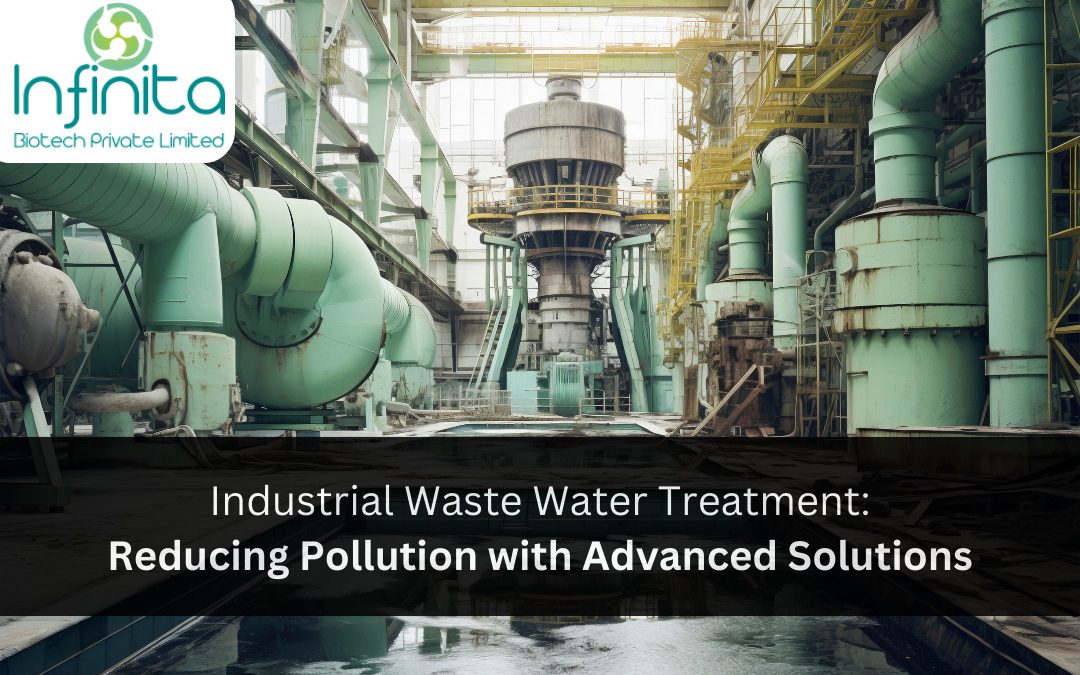Introduction
Industrialization brings economic growth, but it also produces significant environmental challenges, one of which is the treatment of waste water. Industrial waste water is laden with harmful pollutants that, if not treated properly, contaminate water bodies, disrupt ecosystems, and pose health risks. This article explores advanced technologies and sustainable practices that reduce pollution from industrial effluents, ensuring compliance with environmental standards while fostering a sustainable future.
Understanding Industrial Waste Water
Definition and Sources
Industrial waste water refers to the contaminated water discharged from industries such as textile production, chemical manufacturing, and pharmaceutical plants. These effluents vary in composition depending on the processes employed and contain pollutants such as heavy metals, toxins, and organic waste.
Types of Pollutants in Industrial Effluents
The nature of pollutants depends on the industry. Chemical waste, pathogens, and oil-based contaminants are common. Toxic metals like lead and cadmium are often found in electronic industry waste, while textile factories release dyes and solvents into water systems.
The Environmental Impact of Untreated Waste Water
Water Pollution and Ecosystem Disruption
Untreated industrial waste water affects aquatic ecosystems by depleting oxygen levels and introducing harmful chemicals, disrupting marine life. Eutrophication, a result of excess nutrients, leads to algal blooms that suffocate aquatic organisms.
Impact on Human Health and Agriculture
Pollutants from industrial waste water infiltrate drinking water supplies and irrigation systems, contaminating crops and endangering public health. Exposure to contaminated water can cause respiratory diseases, skin ailments, and chronic conditions.
Regulatory Framework for Waste Water Treatment
National and International Standards
Governments and international bodies, such as the EPA and WHO, set stringent regulations to control the discharge of industrial waste water. These regulations define permissible levels for pollutants, promoting sustainable water management.
Importance of Compliance in Industrial Operations
Adhering to these standards protects ecosystems and public health while avoiding legal repercussions. Failure to meet waste water regulations can lead to fines, operational shutdowns, and loss of reputation for industries.
Primary Waste Water Treatment Processes
Screening and Sedimentation
Primary treatment involves the removal of large debris and sediment from waste water. Screens and sedimentation tanks are used to filter out solids, reducing the load on subsequent treatment processes.
Clarification of Suspended Solids
Clarifiers separate suspended solids through gravity, allowing cleaner water to move to secondary treatment. This stage is critical for improving efficiency and preventing clogging in biological treatment systems.
Secondary Treatment Methods
Biological Treatment Processes (Aerobic and Anaerobic)
In secondary treatment, microorganisms break down organic matter. Aerobic methods, like activated sludge, require oxygen, while anaerobic processes work in the absence of oxygen, producing biogas as a byproduct.
Activated Sludge and Trickling Filters
Activated sludge systems use air to promote microbial growth, breaking down pollutants. Trickling filters, on the other hand, utilize a biofilm of microbes to degrade waste as water trickles through filter media.
Advanced and Tertiary Treatment Technologies
Membrane Filtration (Reverse Osmosis, Ultrafiltration)
Membrane filtration techniques such as reverse osmosis (RO) and ultrafiltration remove dissolved solids and contaminants. These technologies provide near-pure water, suitable for industrial reuse or safe discharge.
Advanced Oxidation Processes (AOPs)
AOPs use ozone, UV light, and hydrogen peroxide to degrade organic pollutants that conventional methods cannot remove. These processes are particularly effective for pharmaceutical and chemical industry effluents.
Chemical Treatments for Specific Pollutants
Neutralization of Acids and Alkalis
Chemical industries often release acidic or alkaline waste. Neutralization processes restore the pH balance by adding lime or acid solutions, ensuring the waste water meets environmental standards before discharge.
Precipitation and Coagulation Techniques
Precipitation and coagulation are used to remove heavy metals and other suspended solids from water. Chemicals such as alum or polymer coagulants are added to the waste water to bind particles, which are then removed through sedimentation.
Emerging Technologies in Waste Water Treatment
IoT and Automation for Monitoring and Efficiency
Industries are increasingly adopting IoT sensors and automated systems for real-time monitoring of waste water quality. Automation improves efficiency by detecting irregularities early and optimizing treatment processes.
Use of Artificial Intelligence in Predictive Maintenance
AI-powered systems analyze historical data to predict equipment failures and maintenance needs, minimizing downtime and ensuring continuous waste water treatment.
Sustainable Waste Water Management Practices
Recycling and Reuse of Treated Water
Treated water can be recycled for industrial processes such as cooling and cleaning, reducing the demand for freshwater. Some industries use advanced treatment methods to create zero liquid discharge (ZLD) systems.
Zero Liquid Discharge (ZLD) Systems
ZLD systems ensure that no liquid waste leaves the plant, minimizing environmental impact. These systems recover water for reuse and extract valuable byproducts from concentrated waste streams.
Economic and Operational Challenges
Balancing Cost-Effectiveness and Regulatory Compliance
While advanced technologies offer effective solutions, the cost of implementing and maintaining them can be a challenge. Industries must balance the financial burden with the need for environmental compliance.
Addressing Operational Bottlenecks
Operational challenges such as equipment downtime, fluctuating waste water composition, and energy consumption require proactive management. Regular maintenance and staff training can mitigate these issues.
Conclusion
Industrial waste water treatment plays a vital role in reducing pollution and safeguarding water resources. Advanced technologies, sustainable practices, and strict compliance with environmental standards are essential to achieving long-term success. As industries adopt innovative solutions like AI-powered monitoring and ZLD systems, the future of waste water management looks promising. By committing to sustainable practices, industries can reduce their environmental footprint and contribute to a cleaner, healthier planet.

